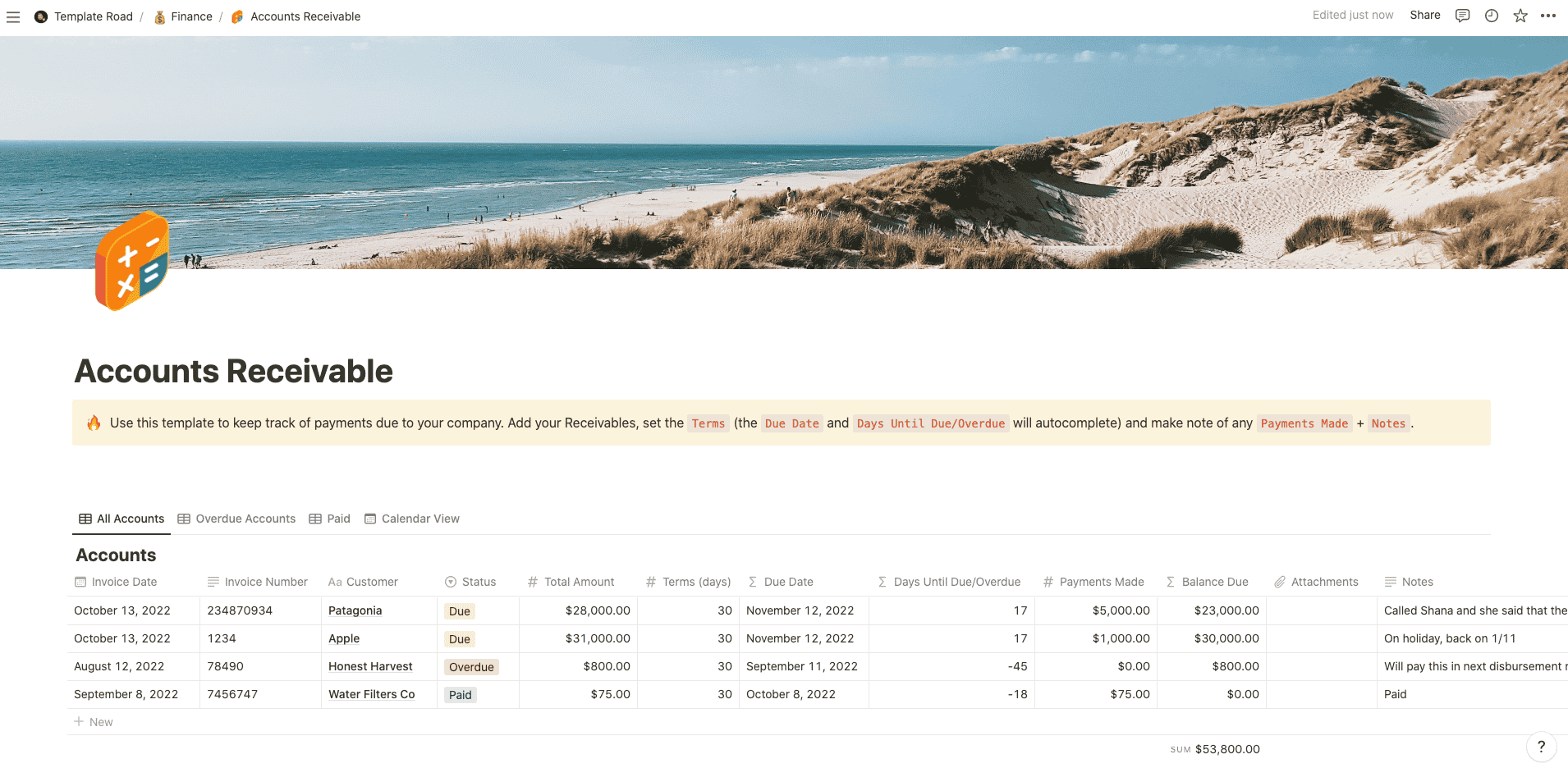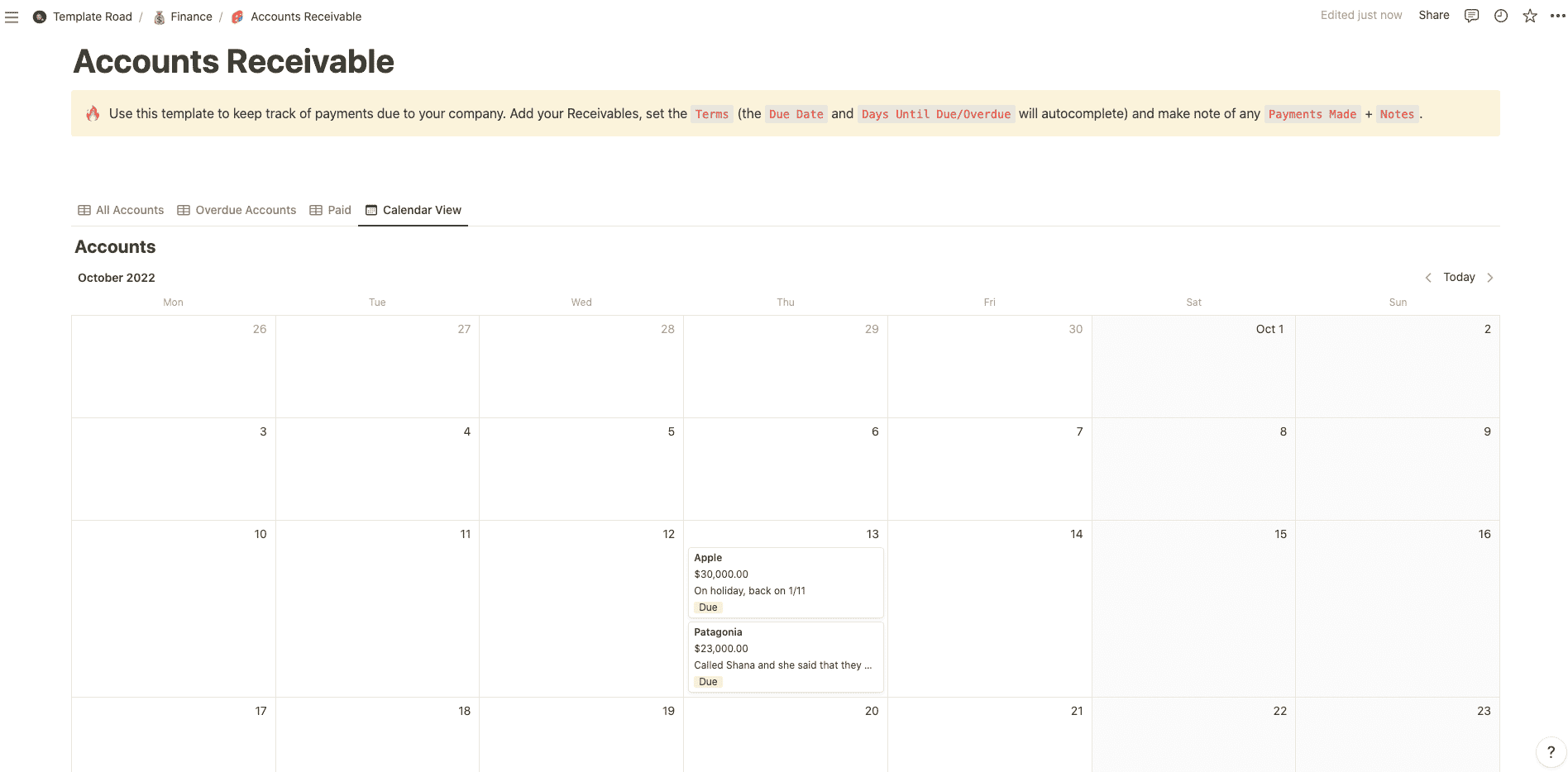Use this template to keep track of money owed to your company.
Buy on
Contents
Notion – Accounts Receivable Template
Use this template to keep track of money owed to your company. The template includes formulas to auto-calculate overdue accounts based on your chosen payment terms. Every business needs an effective system for managing customer payments. With this invoice template, you can easily create invoices for customers who owe money to your company. You’ll also find helpful features such as preprinted sections for tracking payment information and reminders about upcoming deadlines.
——————————————
What you need before purchase
- Basic knowledge of how to use Notion
- Paid Notion account if you want to add lots of content to your template / Notion account (sign up here). Not much content? You’re able to use their free account.
After purchase, you’ll be able to view the template immediately. The template can be added to your Notion account by:
- Click on the template download link in Gumroad
- When viewing the Notion template, click on the “Duplicate” link in the top-right of your screen
- The template will now be available in your own Notion account
How to Manage Accounts Receivables: A Guide for Small Businesses
Accounts receivable management is the process of collecting money owed by customers and then turning that money over to a company’s bank or other financial institution. This can be done in one of two ways, either through invoicing (charging) your customer before they pay you, or through an agreement with them where they agree to make payments on time. The first method is called “pre-payment” and the second is known as “post-payment.”
What Is the Objective of Accounts Receivable Management?
The objective of accounts receivable management is to maximize cash flow from sales while minimizing risk exposure to the business. By managing accounts receivable effectively, companies can reduce their overall costs and increase profits.
How Does Account Receivable Management Work?
Accounts receivable are debts that have been incurred by a company but not yet paid. These debts include all forms of payment including credit card transactions, checks, wire transfers, and even cash. When a customer pays a bill, it becomes part of the accounts receivable collection process. Once the invoice has been processed, the account will be turned over to the appropriate department within the company. It may be sent to the accounting department for processing, or it could be sent to collections if the customer owes more than $1,000.
Best Practices for Accounts Receivable Management
There are many best practices when it comes to accounts receivable management. Some of these best practices include:
- Setting up automated systems so that invoices can be automatically generated and sent out to customers.
- Using software programs that allow for easy tracking of outstanding invoices and payments (like Notion with this accounts receivable template).
- Automating the collection process by using third-party services such as debt collectors.
- Having a clear policy regarding late fees and penalties.
- Providing regular reminders to customers about past due bills.
- Keeping track of how much each customer owes.
- Making sure that there is enough inventory available to meet demand.
- Ensuring that employees know what to do when a customer calls in to inquire about overdue payments.















